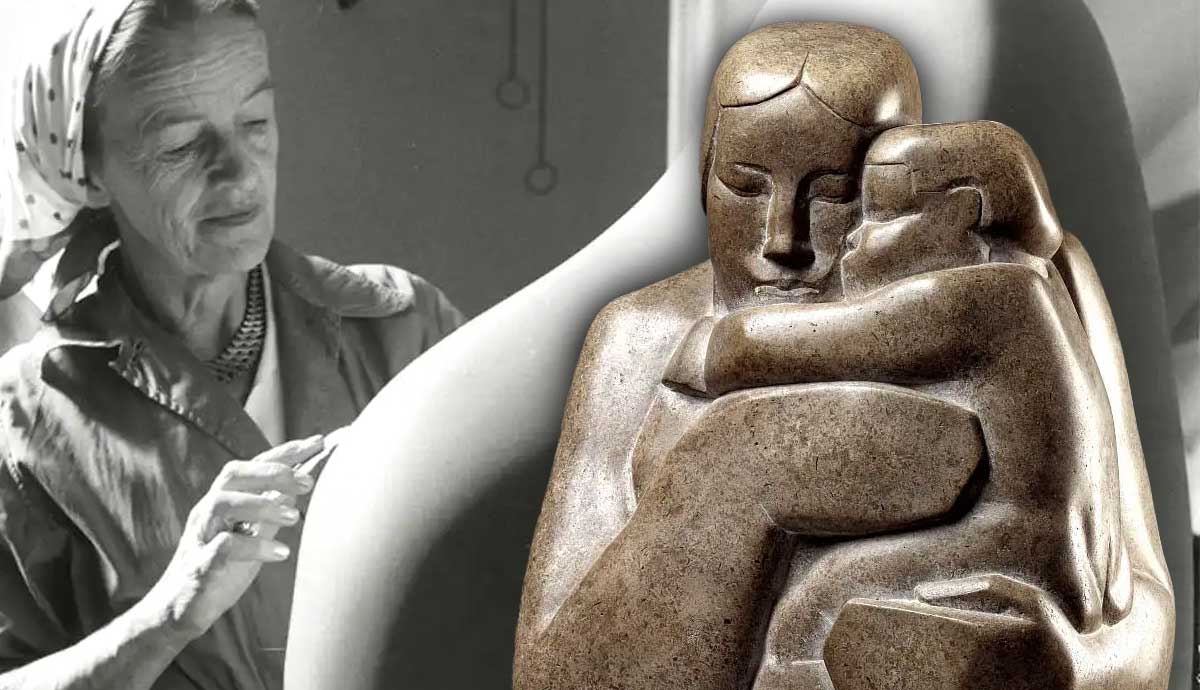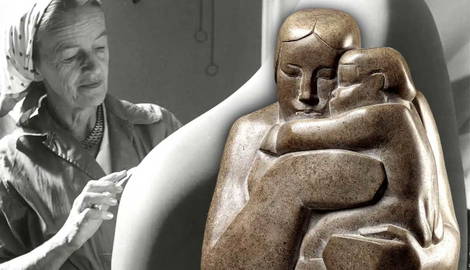
The revered British sculptor Dame Barbara Hepworth made a significant and long-lasting contribution to the development of modern art, with a vast body of art spanning many decades, styles, and materials. As well as producing small-scale, intimate carvings, she also created a series of public art monuments for locations all around the world. She is best-known for creating curvaceous, sensuous and tactile abstract sculptures, which took inspiration from a huge range of different sources, from the personal to the historical. We look through the key influences on Barbara Hepworth’s fascinating works of art in order to find out more.
Ancient Architecture

Barbara Hepworth travelled widely throughout her career, searching for artistic inspiration wherever she went. She was fascinated by the ancient architecture that she encountered throughout Greece, Italy, and in England. Some of the sources that came to inform her art included Greek amphitheaters, Bronze Age standing stones, and classical monuments, with their sensuously smooth, richly tactile surfaces.
The Landscape of Yorkshire

Without a doubt one of Barbara Hepworth’s greatest sources of inspiration came from the English landscape of Yorkshire, where she was born and raised. Hepworth grew up in Wakefield in Yorkshire, and she later explained its impact on her, writing, “All my early memories are of forms and shapes and textures. Moving through and over the West Riding landscape with my father in his car, the hills were sculptures; the roads defined the forms.” It is easy to see how these rolling shapes and forms fed into her smooth, undulating abstract sculptures, which she often made through direct carving, engaging closely with materials in the same way that she once had with the land.
St Ives, Cornwall

Living and working in the coastal town of St Ives in Cornwall during and after World War II had a profound impact on Barbara Hepworth’s art. She began to imitate the vast curving bays of the Cornish coastline in the abstract shapes and forms of her art. She likened the taught strings in her sculptures to her relationship with the wild Cornish scenery, noting, “the strings were the tension I felt between myself and the sea, the wind or the hills.”
Natural Forms

As well as looking at the wider shapes and forms of the British landscape, Hepworth also took inspiration from natural, organic forms that she had collected during her many walks through the British countryside. These included smooth rocks and stones, seed pods, nuts, and shells. Like her friend and contemporary, the British sculptor Henry Moore, Hepworth was fascinated by the inner and outer forms of the organic matter she discovered in nature, and the ways they could wear down and open up in spontaneous ways, by being lashed by the weather or the sea. Her pierced sculptures in particular reveal this fascination with worn down and broken into biomorphic shapes – she punctured many of her sculptures in the center, and sometimes painted the inner core a different color or texture, to reveal something surprising and unexpected beneath the exterior.
Motherhood

Hepworth was deeply moved by her experiences as a mother to four children, and she often made sculptures related to the mother and child theme, both directly and indirectly. One of the key concepts in her art came, in part, from the notion of motherhood – the idea of the inner and outer form. She wrote, “There is an inside and outside to every form … they are in special accord, as for instance a nut in its shell or a child in the womb.” She had her first son in 1929, and gave birth to triplets in 1934. Subsequently her art took a new direction, moving closer to a language of tactile abstraction, with rounded, bodily forms demonstrating the intimate bond between mother and child.










